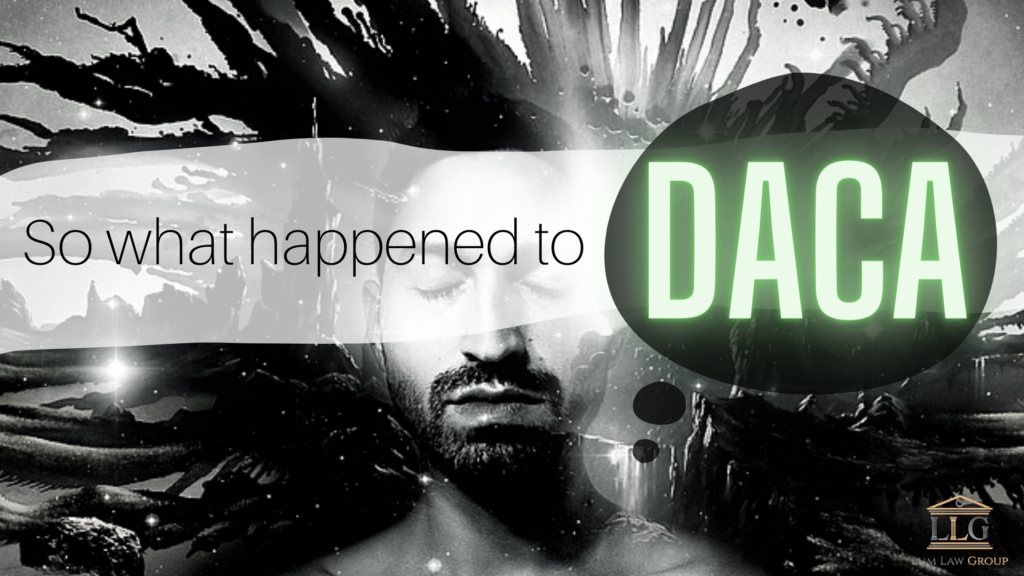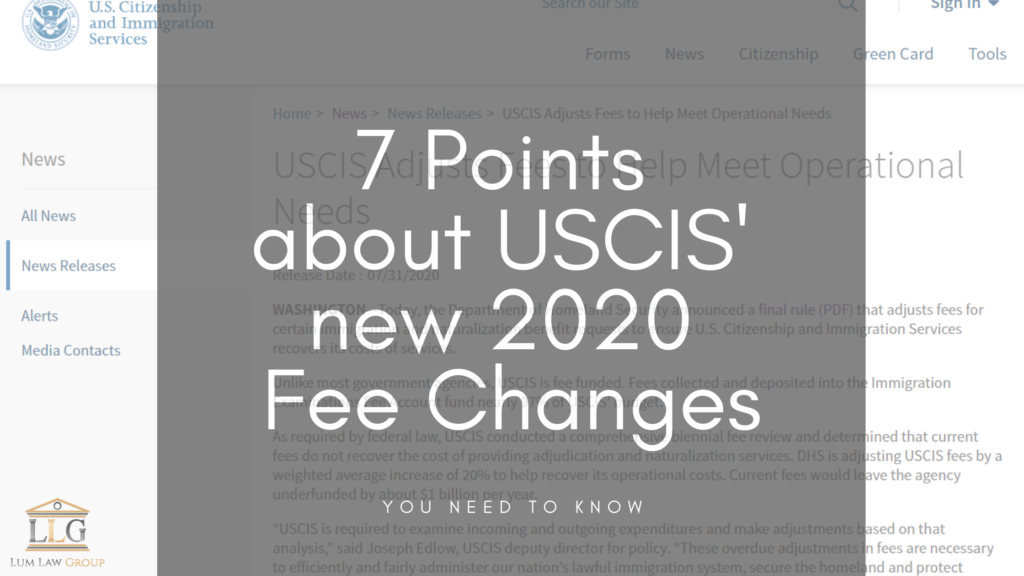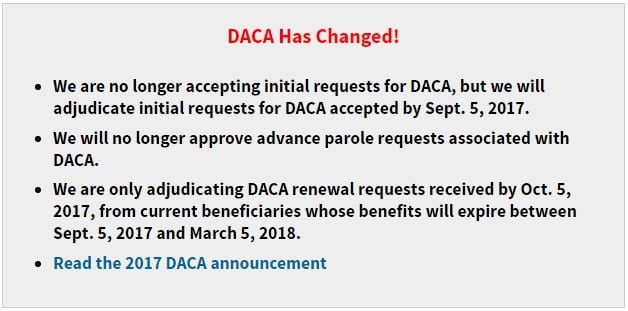So What Happened to DACA?

The Obama-era Consideration of Deferred Action for Childhood Arrivals (DACA) program has been through a roller-coaster ride of ups and downs recently. On June 15, 2020, the Department of Homeland Security (DHS) released a memorandum regarding DACA (“first memorandum”). However, when the Supreme Court released its decision in the lawsuit Trump v. NAACP, No. 18-588 […]
7 Points to Know about USCIS’ New 2020 Fee Requirements

On July 31, 2020, the United States Citizenship & Immigration Services (USCIS) released the final rule regarding their proposed changes to immigration benefits and their associated fees. While many news agencies have highlighted the increased costs in fees, and many non-profits have highlighted how asylum applicants would have to pay a fee, the actual rule […]
Why Yes, You Can Renew Your DACA — for now!

Due to a recent law suit regarding the Deferred Action for Childhood Arrivals (DACA) program, a federal judge has ruled that USCIS must continue the program while the lawsuit is pending a decision. As such, USCIS released a preliminary injunction on January 13, 2018 announcing it will be accepting renewal applications for existing DACA holders […]
Support for DACA

Renew your DACA by Oct 5, 2017 You can renew your DACA if your DACA is expiring between September 5, 2017 and March 5, 2018, but your application must be received before October 5, 2017. If your DACA is expiring after March 5, 2018, it will be valid until its expiration date. You will […]

